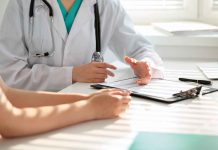
Biden administration’s offshore wind projects hit milestone, sparking debate on clean energy strategy.
At a Glance
- Biden-Harris Administration approves 10th offshore wind project, reaching 15 gigawatts capacity
- $7.3 billion invested in rural clean energy projects across 23 states
- Offshore wind initiatives aim to power 10 million homes and support 77,000 jobs
- Critics question the economic viability and environmental impact of large-scale wind projects
Biden’s Ambitious Offshore Wind Goals
The Biden-Harris Administration has recently approved its 10th offshore wind project, marking a significant milestone in its clean energy strategy. This approval brings the total offshore wind capacity to 15 gigawatts, with an ambitious goal of reaching 30 gigawatts by 2030. The administration claims these efforts will create jobs, establish new industries, and provide clean energy while addressing climate change concerns.
One of the recently approved projects, US Wind off the coast of Maryland, is set to provide 2,200 megawatts of renewable energy, potentially powering up to 770,000 homes. The administration projects that achieving the 30-gigawatt target will power 10 million homes, support 77,000 jobs, and generate $12 billion annually in private investment.
Investments in Rural America
In addition to offshore wind projects, the Biden-Harris Administration has announced a $7.3 billion investment in clean energy for rural electrification. This investment, part of the Empowering Rural America (New ERA) program, is funded by the Inflation Reduction Act and represents the largest such investment since the New Deal.
“Under the Biden-Harris Administration, we are supporting a more prosperous future for rural communities by speeding up the transition to clean energy while at the same time keeping monthly bills low and investing in the American workforce with new jobs and apprenticeships.” suggested Secretary Vilsack
The program has selected 16 rural electric cooperatives across 23 states, aiming to benefit approximately 5 million rural households. These projects are expected to build over 10 gigawatts of clean energy, reduce greenhouse gas emissions, and support thousands of jobs in rural areas.
Challenges and Criticisms
Despite the administration’s enthusiasm, the offshore wind initiatives face challenges and criticisms. Some experts question the economic viability of large-scale wind projects, citing concerns about cost-effectiveness and potential impacts on local ecosystems and industries. Critics argue that the push for offshore wind may come at the expense of other energy sources and could lead to increased energy costs for consumers.
Additionally, the rapid expansion of offshore wind projects has raised concerns about the potential effects on marine life and fishing industries. Some environmental groups and fishing associations have called for more comprehensive studies on the long-term impacts of these massive wind farms on ocean ecosystems.
Looking Ahead
As the Biden administration continues to push forward with its clean energy agenda, the debate over the effectiveness and consequences of these large-scale renewable energy projects is likely to intensify. While supporters tout the potential for job creation and reduced carbon emissions, skeptics remain concerned about the economic and environmental trade-offs.
The success of these initiatives will likely depend on their ability to deliver on promised benefits while addressing the concerns of affected communities and industries. As the projects progress, close monitoring of their impacts on energy prices, job markets, and local ecosystems will be crucial in assessing the overall effectiveness of the administration’s clean energy strategy.














